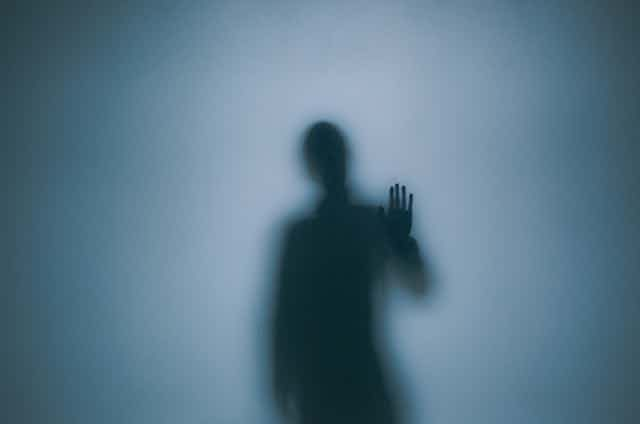A national health advisory issued by U.S. Surgeon General Vivek Murthy on May 3, 2023, sheds light on the urgent public health issues of loneliness and isolation.
The report reflects Dr. Murthy’s personal and professional experience with the damaging health impacts of loneliness. As surprising as it sounds, social isolation and loneliness have the same effect on human health as smoking 15 cigarettes a day, which is to say, it can shorten life span by up to 15 years.
I’m a leader in academic and clinical medicine and I served as the COVID-19 czar for the state of West Virginia, so I have experience in thinking about public health emergencies and how to fix them.
Let’s first look at the problem and then examine some solutions and what the nation would gain by implementing them.
Defining the issue
Loneliness and social isolation are widespread. A 2021 survey by Cigna shows nearly 1 in 6 Americans reported feeling lonely or isolated. That means these conditions likely affect either you or someone you know.
In the same survey, young adults were nearly twice as likely as those over age 65 to report feeling lonely or isolated. In addition, 75% of Hispanics and 68% of Black or African American people reported these conditions, as did a majority of lower-income respondents and single parents.

While there are no definitive explanations for these high numbers, experts have suggested several possible determinants: the mobility of the population, the shift from in-person to remote work and learning since the beginning of the pandemic, and the deep divides in society caused by social media and irresponsible news sites. To grab the attention of viewers, some advertisers and media leaders understand that human beings are biased toward messages that activate fear and loss. In fact, the scientific term “aversion bias” demonstrates people are twice as fearful of loss as happy for gain.
When we feel socially isolated and lonely, our vigilance for threat activates our core survival instincts, which are rooted in evolutionary times. For early humans, being accepted and belonging to a group or community were key factors in survival. Being separated or ousted from one’s tribe meant almost certain death.
Thriving relationships became critical to human feelings of safety and well-being. In fact, longevity studies consistently find that the strength of one’s lifelong relationships is the most important driver of a long and healthy life.
Stress and loneliness are connected
The human nervous system is balanced into two modes: the “fight or flight” of the sympathetic system and the “rest and digest” of the parasympathetic system.
Loneliness and isolation drive unbalanced activation of the sympathetic nervous system, leading to hypervigilance, or scanning the environment for threats. Once this threat response is activated, people see their environment as unsafe, leading to release of hormones that interfere with our trust and pleasure responses. As this stress-response heightens, people experience surges in hormones that elevate their heart rate and blood pressure.
Over time, release of these hormones damages our blood vessels, heart, brain, blood and liver and our metabolic and musculoskeletal systems. Much like a car engine that is continually over-revved, our body’s systems begin to break down and our perceived experience of pain is heightened.
Feelings of worthlessness and fear increase the risk of substance use, mental health challenges, a variety of chronic diseases and obesity – all of which can contribute to a reduced life span.
In other words, loneliness and isolation drive disease and shorten life spans through unbalanced activation of the sympathetic nervous system induced by the perception of threat and chronic stress.
Of course, stress can also lead people to isolate themselves, so the effects do go both ways.
Finding relief
A primary solution to loneliness and social isolation is meaningful social connection.
Societal connections boost our perceptions of psychological and physical safety, worth and value and enhance feelings of belonging and contributing.
These critical relationships branch out from our families to our friends to form networks of trust and community. These networks of relationships are termed “social capital.”
Princeton University economists Anne Case and Angus Deaton hypothesize that the reduction of social capital and hope stemming from the loss of jobs in Appalachia and the Ohio River Valley from 1999 to 2013 was a key driver of deaths from overdose, suicide and liver disease in these areas.
So what can be done to address the loneliness epidemic?
In his Framework for a National Strategy to Advance Social Connection, Murthy provides a practical call for action to address the public health problem of social disconnection and to strengthen social connection and community. These strategies include being open to new relationships, reconnecting with friends and distant family members and serving others by volunteering. The framework includes shareable tools and resources for individuals and organizations to invest in community-based social relationships and improve their community’s mental health.
One reason I am answering this call is that my home state of West Virginia is the only one located entirely in Appalachia.
Appalachia is the central location of “deaths of despair,” meaning people living here are disproportionately affected by the loss of jobs, social capital, purpose and relationships that result in the experience of loneliness and social isolation.
This may explain why West Virginians have the second-lowest life expectancy in the country and some of the poorest health metrics.
But I would argue West Virginia also has resilient people who care about one another. There is a real goodness and kindness in our people. To serve our state better, the staff at the flagship university academic medical center is building more sophisticated and better health care access. My colleagues in business and government are focusing on reversing loneliness and social isolation through jobs that provide income, social capital and caring relationships.
Like the COVID-19 pandemic, the isolation and loneliness pandemic requires us to work together in community to make a positive difference.

